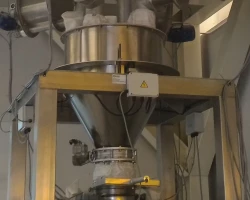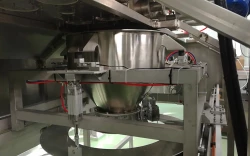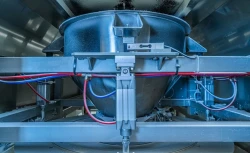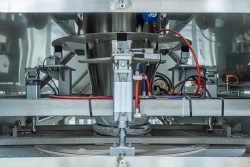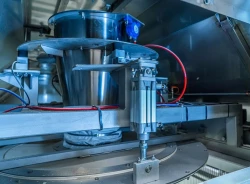Weigh Hoppers
series TBY, TBYM
Fix Weigh Hopper model TBY
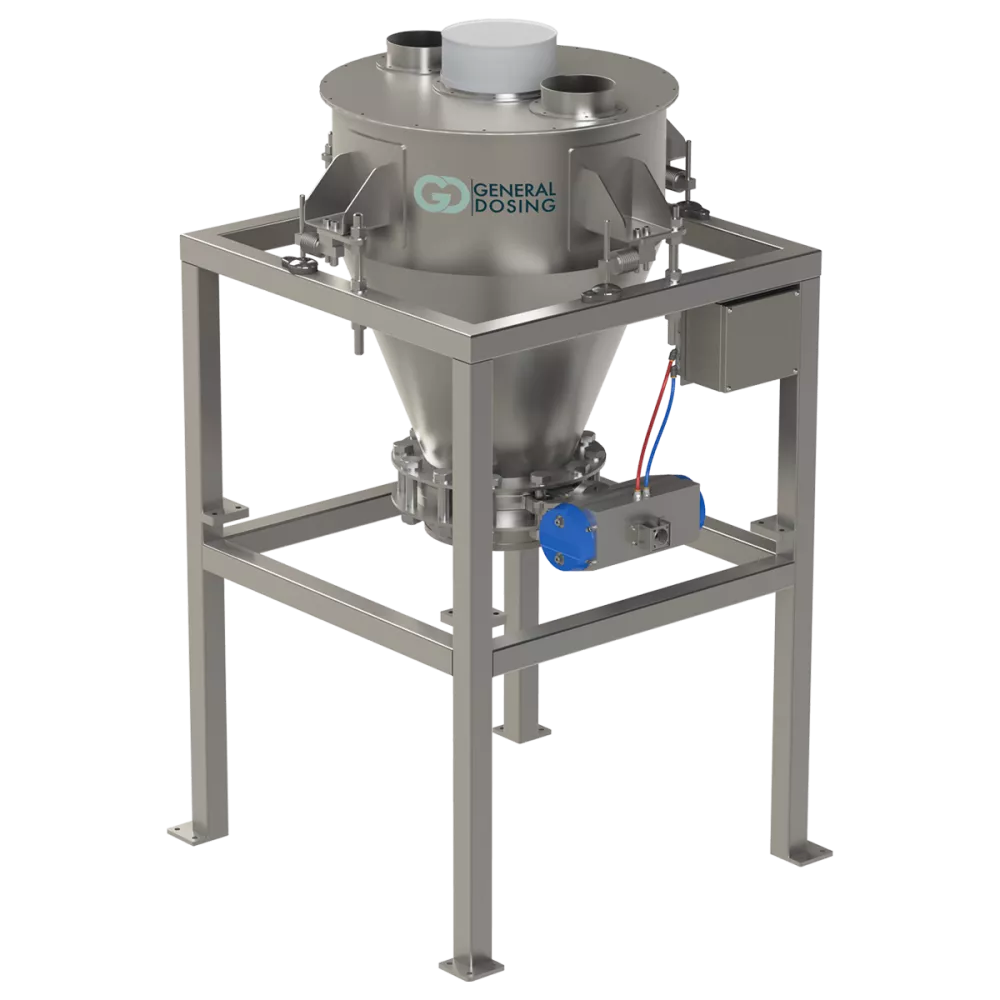
Mobile Weigh Hopper model TBYM
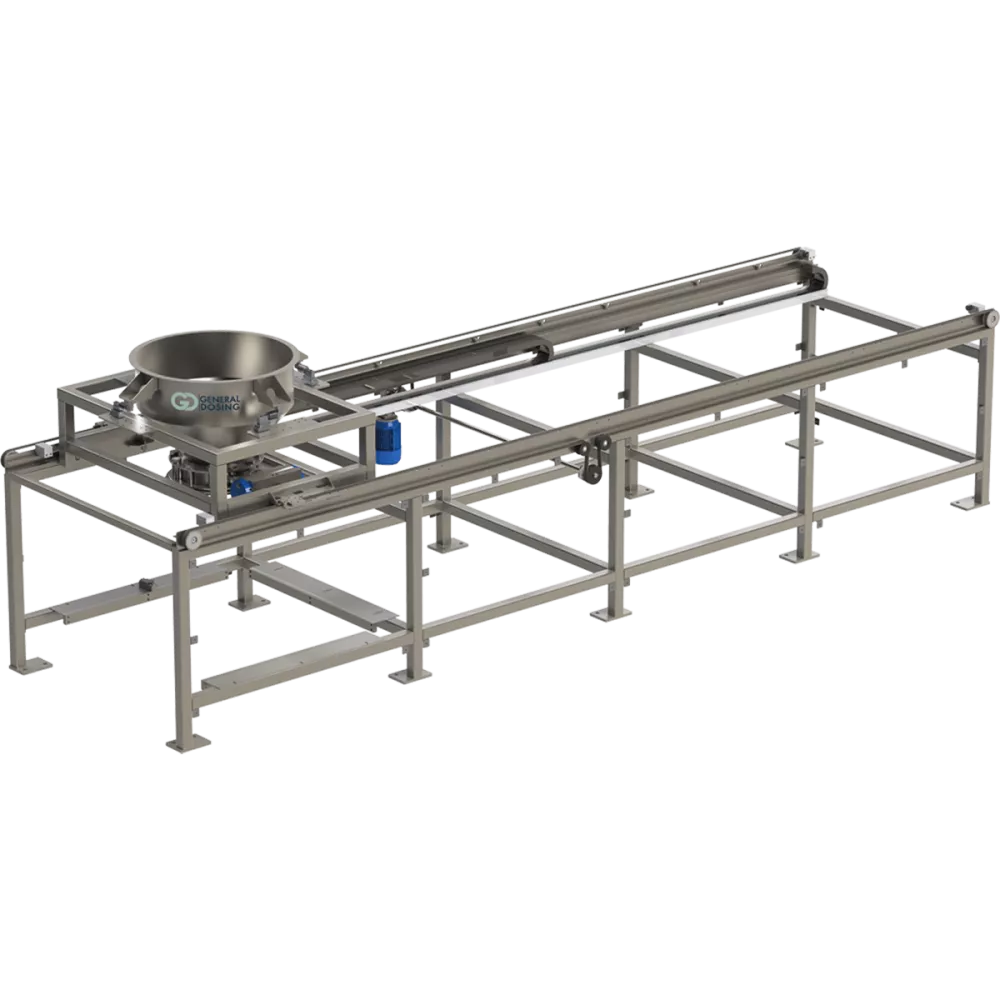
They are used in the batch dosing systems to weigh products delivered by one or more dosers. The dosers that are usually used are screw type series CH, BH, DFV, G or vibratory channel type series VF. The dosing of the various ingredients is performed according to the quantity preset in the recipe.
The hoppers TBY and TBYM are not stand-alone systems but constitute a fundamental addition to plants in the transformation of raw materials. They can be used as weighing systems for automatic bagging or filling systems, or more in general to feed mixing processes or packing lines. To transfer the dosed products, where it is not possible to operate simply falling by gravity, it can be used pneumatic conveying systems in vacuum with hopper loaders series ATS, AJS, ATSY, AJSY with relative vacuum units series UATC, UATV and UAVL.
The weigh hoppers series TBY and TBYM are truncated-conical shaped and they are dimensioned to contain the volume corresponding to the biggest dosing batch provided among all the recipes. They are equipped with outer supporting brackets that allow the installation on load cells. The load cells are off-center, flexion or shear-beam type, made in aluminium or in stainless steel with protection grade up to IP67, available also with Atex certification when requested.
So the various products are weight dosed one by one following the sequence provided in the preset recipe.
In case of many products to dose, and to optimize the installation spaces, it is possible to provide moving weight hoppers (TBYM) that allow to install the dosers right next to each other to form a single row or as an alternative two opposed rows. The moving hopper TBYM automatically goes and stops in correspondence of each doser during the recipe running following the sequence expected .
The moving weigh hopper TBYM is installed on a motorized cart that moves on rail. Proper limit switches are placed in correspondence of every doser discharge in order to identify their position and handle consequently the path of the weigh hopper automatically.
At the bottom of the weigh hoppers TBY and TBYM it is installed a discharge valve electro-pneumatically operated. There can be a butterfly or a clapè type valve depending on the characteristics of the product.
Once the batch is completed the valve opens when the plant general logic gives the enable signal to discharge it. The batch is unloaded, the weigh hopper empties and it is ready again for the next dosing cycle.
The lid of the weight hopper TBY and TBYM has inlets that are connected to the spouts of the relative dosers with flexible rubber or fabric sleeves that prevent the dust to come out in the environment. There are also vent sockets with relative dustproof sleeve in polyester filtering fabric.
It is also possible to provide an unloading hopper, installed directly under the weigh hopper, whose function is to allow the prompt discharge of the batch as soon as done so as to make the Multi-Ingredients Stations MDA and MDAL immediately start again with the next dosing cycle, so minimizing the dead time and increasing productive capacity.
Complete the setup of the weigh hoppers TBY proper assembly structures dimensioned to house also eventual discharge hoppers in order to form a single integrated and compact system. The construction materials used for the weight hoppers TBY and TBYM are varnished carbon steel and stainless steel Aisi 304 and 316L.
The most used construction materials are stainless steel Aisi 304 and 316L, but it is also possible to provide carbon steel on request.
The surfaces in contact with the product can be easily pickled or mirror polished in case of poorly flowing products. It is possible to have certifications of the contact materials on request.
The outer surfaces are satin finished 180 mesh. It is possible to have them glass bead blasted or electro-polished on request.
The gaskets are made in dust-tight rubber , such as SBR or NBR. They are available also with FDA certification on request.
The construction materials used for the supportive structures are stainless steel Aisi 304 or carbon varnished steel.
These systems are available also in the Atex version when it is requested.
Electrical control panels can also be supplied including software specifically designed accordingly to the requested functionality.

